As an Amazon Associate I earn from qualifying purchases.
I’ve not yet been able to find a recipe for grilled tongue tacos in any Mexican cookbook, but they are so good some taquero somewhere has to be doing it.
What’s new? While my regular recipe for tacos de lengua is more traditional, where you chop the tongue then finish it with some lard in a frying pan, in this version, the tongue tacos are grilled over a hot fire first, then chopped and served.
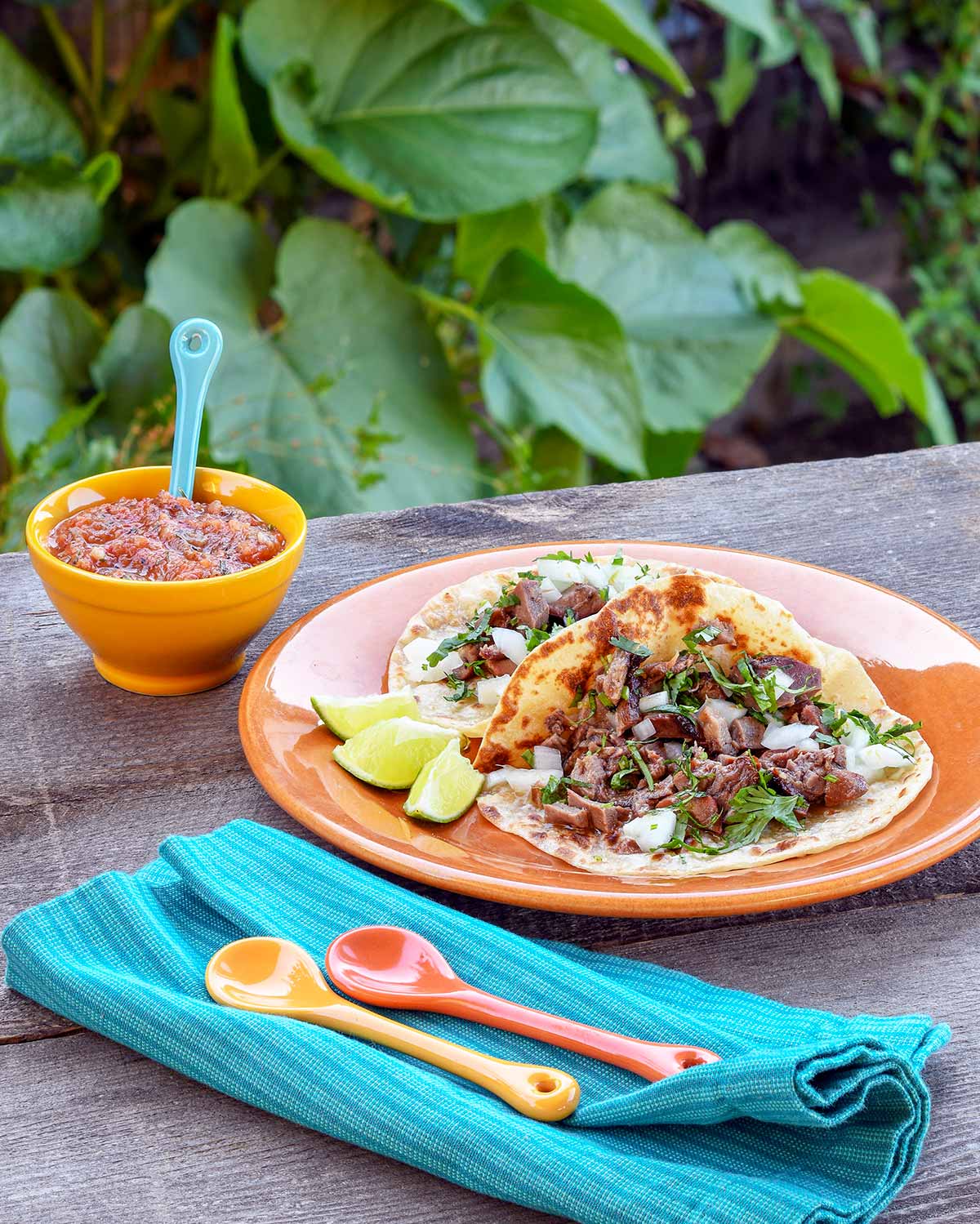
The difference is profound. Something about the kiss of flame and a bath in mesquite smoke really makes these tacos special. The simplicity is elegant, too. Simmer the tongue or tongues until tender, peel the skin off them, then sear hard over open fire. Chop and serve as you like.
And in keeping with that simplicity, I typically dress my tongue tacos only with white onion soaked in lime juice, a single salsa, and chopped cilantro or some other appropriate herb.
Since this style of taco is very much a northern Mexico thing, I went with homemade flour tortillas. (Here is my recipe for flour tortillas.) You could use corn if you prefer, and I have a recipe for homemade corn tortillas, too.
The salsa is up to you, I like salsa morita a lot with this, because of the smokiness of the morita chiles. But there are many other possibilities.
A word on the meat. Traditionally, tongue tacos use beef tongue. And I would normally use elk tongue. Having neither, I emptied my freezer of its assorted tongues: deer tongues, pig tongues and even a few lamb tongues I got as a gift from my friends at Covey Rise Farms.
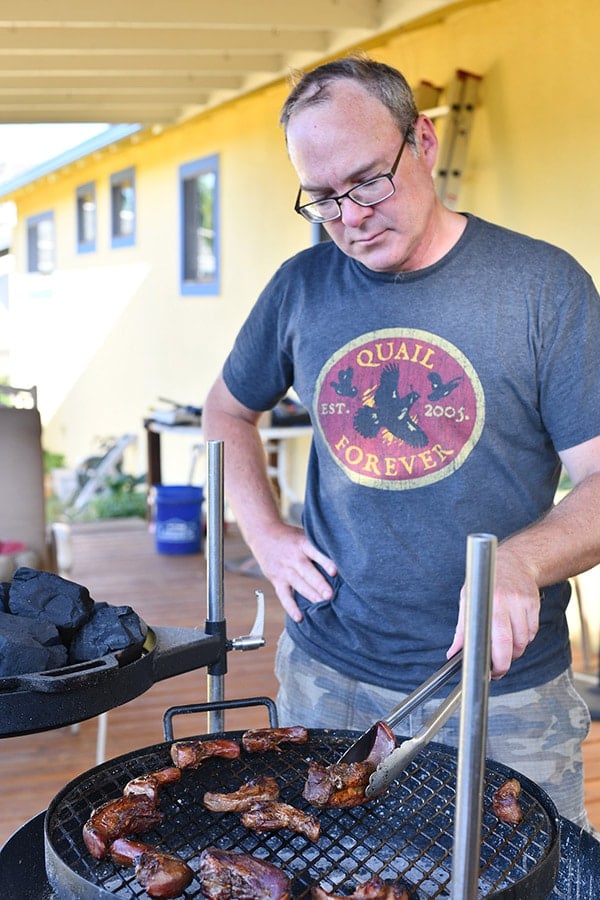
That might seem odd, using tongues from different animals, but it wasn’t. Honestly, after being simmered, peeled, grilled and chopped, they all tasted roughly the same.
Meaty, dense, silky, tender. The biggest difference was that the deer tongues needed an hour more than the other tongues to get tender.
You can simmer and peel the tongues up to several days in advance, so when you are ready to grill it won’t be an all-day project. And, once made, your tongue tacos will keep a week in the fridge. Just reheat the chopped meat in a pan with a little lard or oil and you’re good to go.
Grilled Tongue Tacos
Ingredients
MEAT
- 2 pounds tongues (typically 1 beef tongue)
- 2 quarts water or broth (see note below)
- 3 tablespoons vegetable oil
ONIONS
- 1 large white onion, chopped
- 1/2 cup lime juice
- Salt
TACOS
- 1/4 cup chopped cilantro
- Salsa of your choice
- Flour or corn tortillas
Instructions
- You need to simmer the tongues first. You can go as simple as simmering them in beef or chicken broth, or if you want to do water, add some bay leaves or avocado leaves, some chopped onion and maybe a carrot or two. See below for some tips on the making a great simmering broth.
- Once the tongue is tender, which will take about 2 to 3 hours, remove it and, as soon as it is barely cool enough to handle, peel the skin off it. You might need a paring knife to help you with this. Discard the skin. Strain the broth and use it for some other purpose later.
- While the tongue is simmering, mix the onion with some salt and the lime juice and let it sit at room temperature. This is best done the day you serve, but you can keep the pickled onion in the fridge a day or three without it getting nasty.
- When the tongue is ready for the grill, get your fire nice and hot. If you are using smaller tongues, leave them whole. If you are using a large beef or elk tongue, cut it into 3 or 4 large chunks — this will open up more surface area for browning. Coat the tongue with a little oil and grill until nicely browned.
- When you are ready to serve, chop the tongue well and serve with the onions, salsa and cilantro on the tortilla of your choice.
Notes
Keys to Success
- If you are going to make a mistake, err on simmering the tongues longer than you might think. It won’t hurt them.
- Always peel the skin off when the tongues are warm. It’s much harder when they are cold.
- If you can, grill your tongues over a smoky fire. It really makes a difference. If you are using a gas grill, add some wood chips in foil right on the burners to generate smoke.
- These are so good I rarely dress them with a lot. I do like a little chiltepin hot sauce, or whole chiles pequin, and sometimes I do like some avocado-tomatillo salsa on my tacos.
Nutrition
Nutrition information is automatically calculated, so should only be used as an approximation.



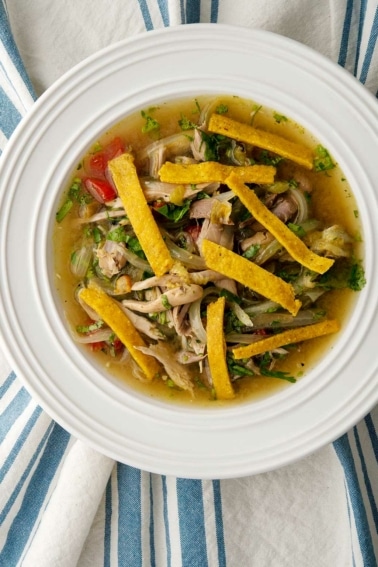
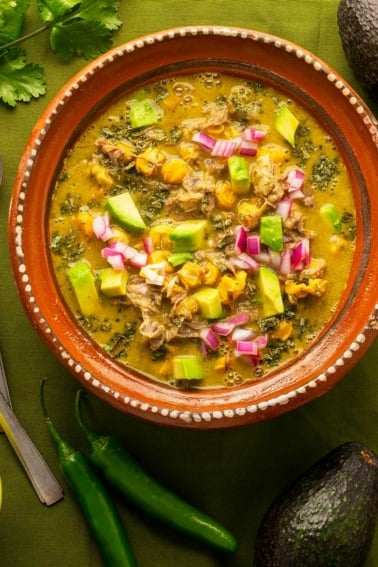
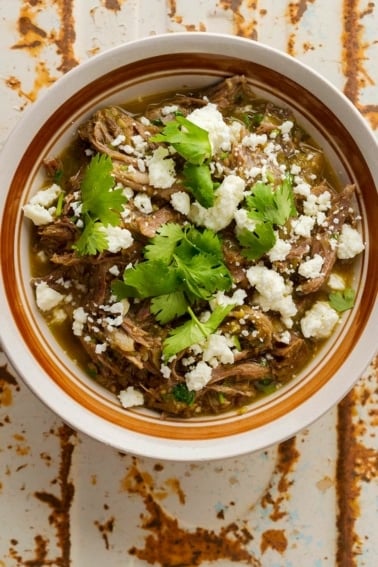
Made this with our homegrown beef. Told our site butcher “save the tongue, (and the cheeks) ! “. A very rich meat and can’t honestly say I enjoyed the smell of slow cooking, but after grilling it, SENSATIONAL! Along with my fresh Pico de Gallo salsa, garden fresh tomatoes and chilli. Great recipe, I was really stoked with my cook. Thank you! (Wish I could send a photo)
Off the chain delicious!!!!
This recipe is a hit!! Highly recommend. The textural Differences from a light char on the grill send it over the top. Used the simmering broth for Spanish rice. Outstanding meal. Thank you once again Hank.
This was excellent with beef tongue. I will have to start saving my deer tongues now!
This recipe is the best. If you haven’t eaten tongue meat you are missing out. This recipe is perfect as it is, though sometimes I slather the cooked and peeled tongue with achiote paste ( also hanks recipe) and once in Berbere marinade for ten minutes or so before chopping and pan frying in lard. Then into the tacos it goes. the best.
Any recommendations for finishing it on a pellet grill instead of a open mesquite fire? It may be a little more convenient for me. Looks like an awesome recipe, can’t wait to try it!
Trevor: Well, you can certainly smoke them for an hour on your pellet grill’s smoke setting. That would work well, albeit a little differently.
Thank you for this! We were recently gifted a tongue when a friend purchased his beef. Now I can feel confident on preparing!
We were also gifted the liver, sliced. Other than my traditional liver and onions, do you have other recipes to suggest?
Pam: I don’t love beef liver, but I like it in these meatballs: https://honest-food.net/faggots-recipe-british-meatballs/
Hank,
First off, I am the primary cook in our household of 5 and your cookbooks are my main source for inspiration. I am incredibly grateful for your expertise, curiosity, and willingness to share your discoveries. My whole family says a big “Thank you!” Second, I have recently been introduced to the sous-vide technique and am wondering if you have ever prepared tongue using a sous-vide? Thanks.
Josh: Thanks for the kind words! I have cooked tongue sous vide, but I found it wholly unnecessary. You don’t need precision here, so the whole vac sealing and sticking into a water bath was extra work, and besides, you cannot tell when each tongue is ready with sous vide. You need to check on them from time to time by sticking a knife blade into the tongue. Can’t do that with sous vide.
A delicious idea for using a meat once appreciated, but now mostly forgotten. Most hunters throw the entire head, including the tongue, away. The tongues from the animals raised by small farms and families who raise a pig or two, or a beef steer, or maybe some lambs to help feed their families are almost always discarded. Or fed to dogs.
One suggestion: Ditch the ‘vegetable’ oil. It is not made from vegetables, it’s made from seeds, like corn, soy, and rapeseed (canola is a variety of rapeseed developed to have a lower toxin content). Seed oils, as the industry itself calls them, are processed and refined in facilities that look like… oil refineries. Yes, petroleum refineries. That should be our first clue that this stuff is not really food.
Some seeds contain oils, like linseed (flax) or cottonseeds. Others, like corn, do not. No matter how much you squeeze corn, no oil comes out. Get some corn sold for feeding deer, or in birdseed, and try it. The oil in oilseeds, like flax*, is highly unstable – like all seed oils – and once separated from the seed, it quickly goes rancid. All seed oils are put through a complex process, including chemically being de-odorized, so that we can consume it, instead of retching at the smell. This response is intended to protect us from the toxic effects of eating anything rancid. When heated, the processed seed oils generate even more toxic chemical compounds.
*The Omega 3 fatty acids from plant sources are not in the correct form for the human body to utilize. Only a tiny fraction of the Omega 3s from plants can be converted to the EPA and DHA that is essential for the human brain. 100% grassfed/forage-fed meats, and butter, cheese, and cream are good sources of the essential Omega 3s. Oily fish is, too, if you can find some sustainably wild-caught that is not contaminated with toxic chemical, mercury, micro-plastics… Farmed fish is generally very low in Omega 3s.
Seed oils were originally used for industrial purposes, like lubricating , manufacturing paints, etc. Crisco was invented by Proctor & Gamble for candle and soap making, as an artificial lard. When lightbulbs came into wide use, they needed a new market for their solidified seed oils (Crisco was origonaly manufactured from cottonseed oil.
https://www.youtube.com/watch?v=Q2UnOryQiIY
Fruit oils, like avocado and olive oils, are often ‘cut’ with cheap seed oils, and sometimes are just seed oils, dye and treated with chemicals to help hide that fact. Even nut oils will also quickly go rancid.
Instead, we melt a little lard or beef tallow, or sheep suet and use that instead of oils in cooking. Back when McDonald’s fries were cooked in beef tallow, the people of the US were among the healthiest. Now, our population is the sickest of the developed nations – as the consumption of meats and animal fats like butter and lard has plummeted, and seed oil (‘vegetable’) consumption has skyrocketed.
Resources: DiagnosisDiet.com (Dr. G. Ede, MD) Nina Teicholtz ‘Big Fat Surprise’, and many others.
What cooking oils do you recommend that I can find at the grocery store? We use olive oil for general grilling/cooking and rice oil for frying fish.
Joe: Just to coat the tongue before grilling? Anything is fine.
My benchmark for how good a Mexican restaurant is relies on how good their lengua is.
I’ve made it st home, and can’t wait to try this! Is it possible to prepare the tongue in an instant pot? Same ingredients, but shorter cook time, and it doesn’t heat up the house!
Thanks!
Laura: I am certain you can, but I don’t know how long.
I’ve been cooking beef tongue for about an hour and a quarter in an instant pot, slow release. I used a small bit of ancho paste I found in the freezer, some sliced onion, and water to cover. The broth that I ended up with was pretty tasty, so I froze it in cubes and reused for subsequent batches and sauce making.
Coincidentally, right before seeing this recipe in email, I got a confirmation of a meat order including two bison tongues.